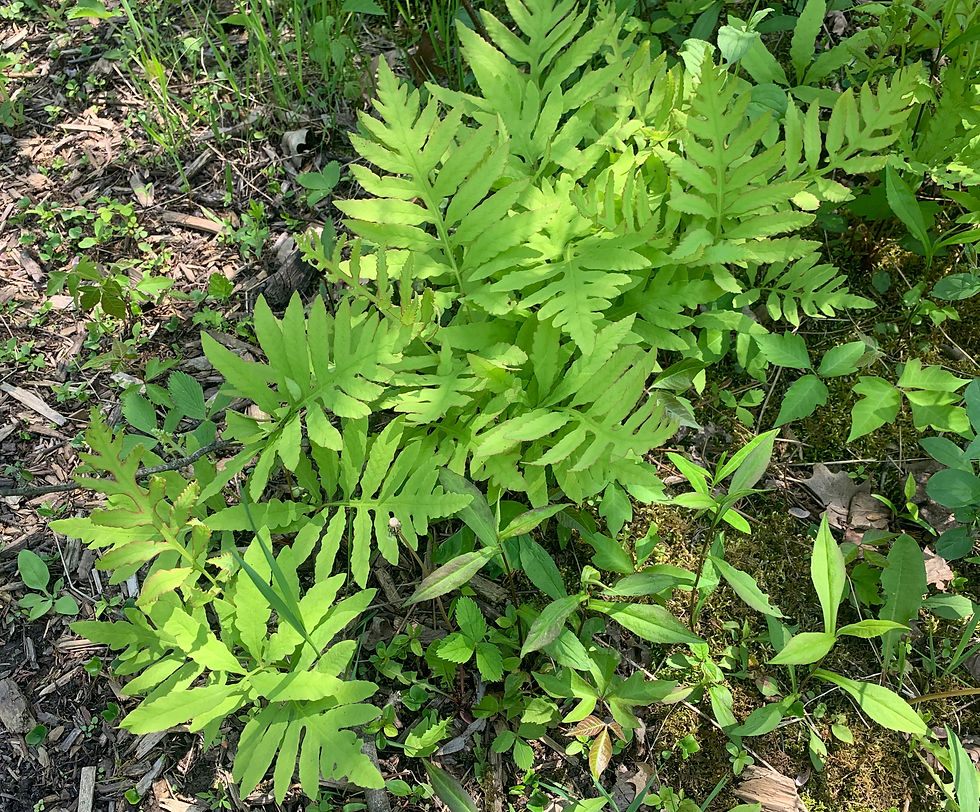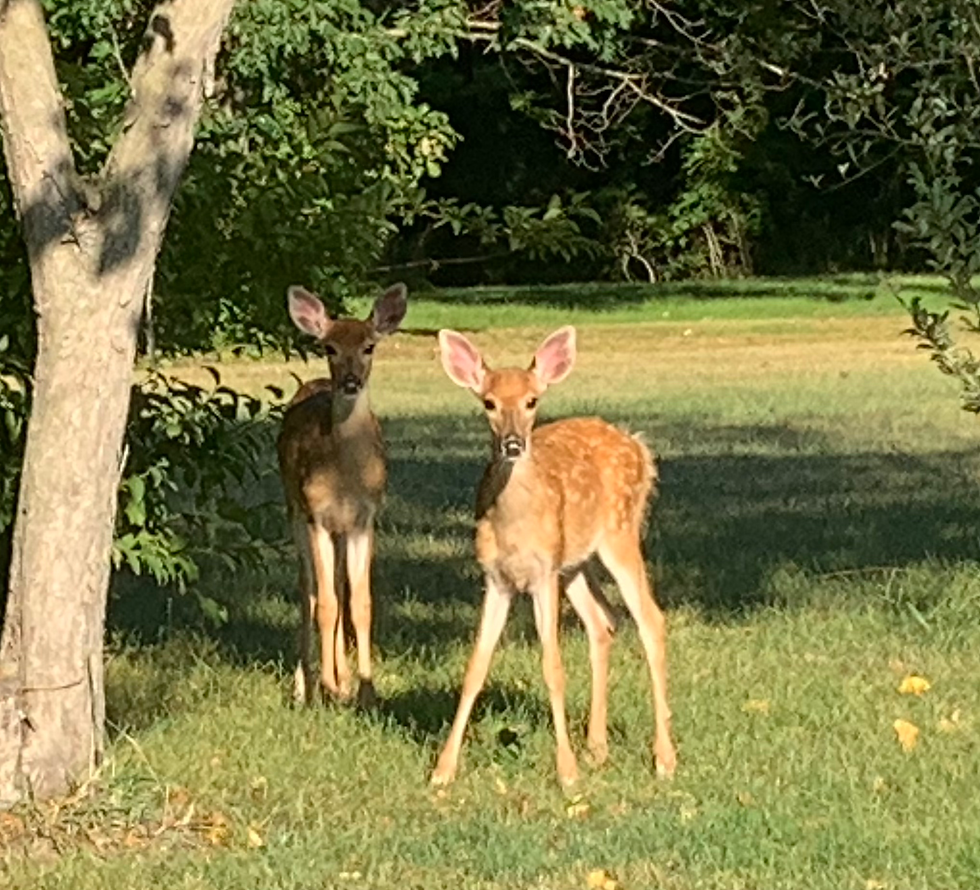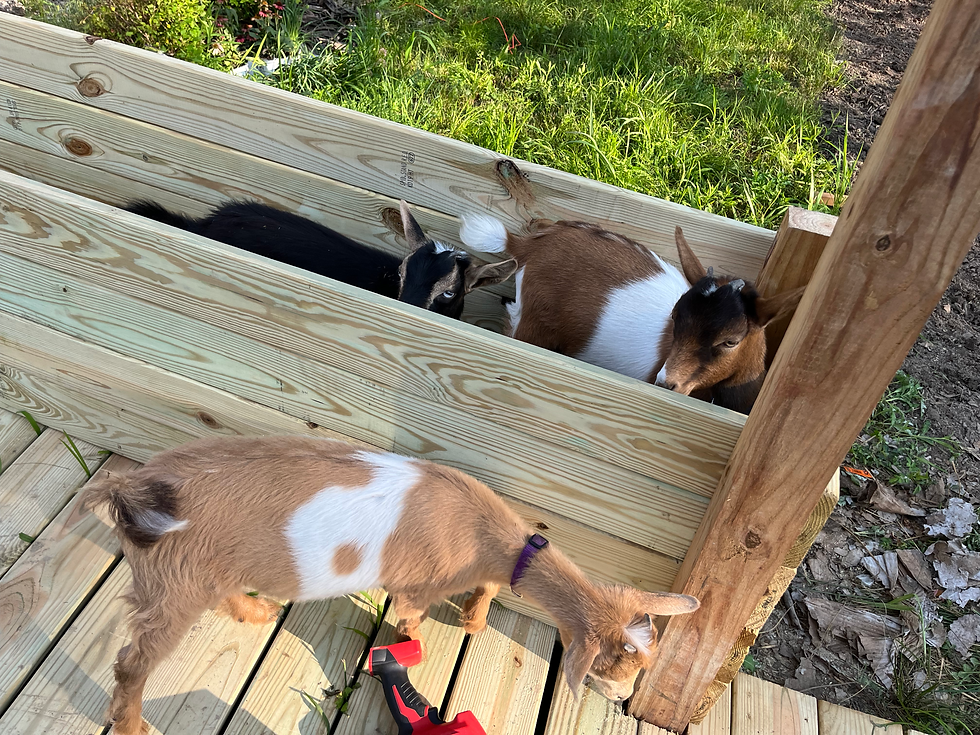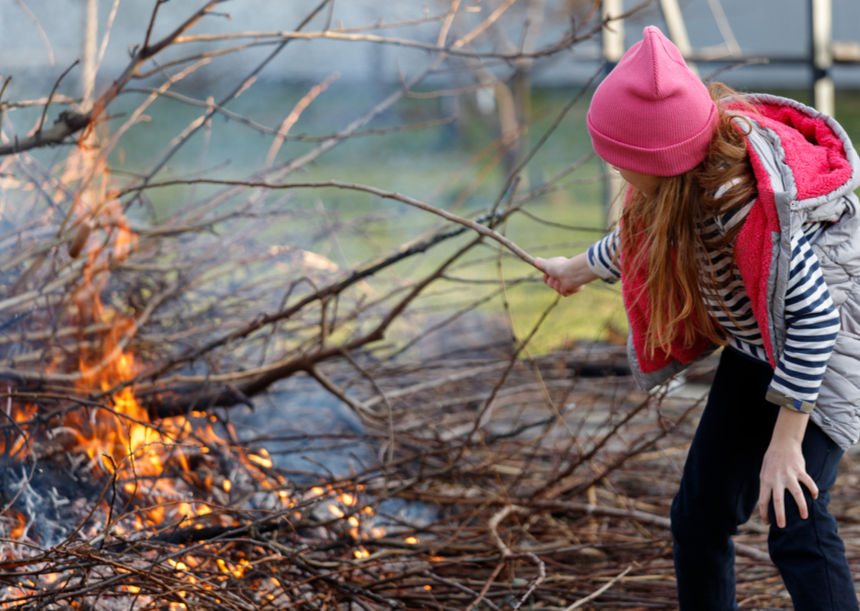Goats!
- Katy Adams

- Jul 25
- 12 min read
Some observations about the good things that come from making space

When you’re facing a thicket of buckthorn, poison ivy, and invasive shrubs like multiflora rose and autumn olive, the task of clearing it all can feel overwhelming and painful! At Fellowfield Discovery Park, we wanted to restore the front acreage to a more balanced, native landscape, but the dense overgrowth made the area nearly impenetrable.
There were clusters of 50 year old buckthorn trees, looking like a Van Gogh painting with their rough and twisting branches. Their trunks, growing like great thick posts firmly planted in the ground, forking out into a network of stiff smaller branches that poked at us, caught in our hair, and formed thick low canopies. In many places, the ground, so choked of sunlight, was completely bare, except for the mass of straight young buckthorn sprouting around the network of their parent’s roots.

In other spots, we were trying to tackle autumn olive shrubs seven feet tall laced with vines
of poison ivy. Mixed in were massive thickets of multiflora rose, tangled like something out of Sleeping Beauty’s enchanted forest. Their stems covered with thorns so tough that even with jeans, a jacket, and leather gloves, I still went home with scratches.

My arms bore the marks of every hour we tried to work our way in, but we continued our slow approach with loppers and handsaws for two reasons. Traditional solutions like chemical treatments or heavy machinery didn’t align with the park’s mission of sustainability. And, most importantly, we were learning about the land and its inhabitants by taking this slow and personal approach while keeping an eye out for hidden diversity. But after two seasons of working this way, we knew we were unlikely to discover any native shrubs hidden in the thicket. We could also see our approach was not going to be effective long-term. It felt like a full-time job to keep the invasives from just retaking the areas we had cleared.
That’s when someone suggested goats.
At first, the idea seemed almost too whimsical to work, but in the summer of 2022, nine full-grown Boer goats arrived in a trailer, ready to take on the challenge. What followed was not just an effective solution but one of the most memorable and unexpectedly delightful experiences of the season.

Why Goats?
Goats have a long history as partners in land management, valued for their ability to browse woody vegetation and thrive in tough landscapes. Across the globe, people have relied on goats to maintain pasturelands, clear overgrowth, and even prevent wildfires. Recently, their reputation as eco-friendly landscapers has been growing as well, with cities, counties, and land managers deploying them to restore parks, trails, and urban green spaces.
In Michigan, goats have been spotted working on public lands in places like Ann Arbor and Detroit, where local governments have teamed up with farmers to control invasive species.

This is because goats are uniquely suited to tackling the kind of overgrowth we faced. Unlike sheep or cattle, which prefer grazing on grasses, goats are natural browsers. Their diet leans heavily toward leafy and woody vegetation such as shrubs, tree seedlings, and yes, poison ivy. The park is the feeding ground for many other plant-eaters. Rabbits, groundhogs, and groups of young whitetail bucks or does with their fawns are spotted almost daily. But this native wildlife, even when densely populated, tend to avoid eating these plants. Goats, on the other hand, seem to relish them.
The goats’ approach to buckthorn is particularly impressive. They do not just nibble at the leaves, they rise up on their hind legs to reach high branches and use the weight of their body to bend and break them, stripping the stems clean and gnawing on the bark, which weakens the plants and slows regrowth. They tackle multiflora rose, poison ivy, and autumn olive with equal enthusiasm. And they work with no fossil fuels, no chemicals, no noisy equipment. They even fertilize the wounded soil as they go.
Farmer Mike's Visiting Herd
Farmer Mike and his son from Twin Willow Ranch in Milan, arrived one sunny afternoon with a small trailer carrying nine big Boer goats. After a brief orientation, they set up a portable electric fence to keep the goats contained in their grazing area. The fence, we soon learned, was more of a suggestion than a mandate.
The goats were left to live outdoors, much like the wild deer and other animals of the park. They roamed and grazed together during the day, staying close as a group and watching out for one another. When it was time to rest, they sought out the shade of a stand of young oak, hickory, and white cedar trees, where they lounged comfortably, chewing their cud and keeping a lookout.
They didn’t need much from us, Farmer Mike had it covered, and we just made the occasional check-in to ensure they had water and that the fence was still doing its job. Their social, self-reliant nature was a joy to watch. Occasionally, their curiosity got the better of them, and one or two would hop the fence to hang out with us as we worked nearby. But they always returned to their group, drawn back by their instinct to stick together.


We set up a motion camera to capture the goats in action, documenting their impact over the two weeks they stayed with us. Day by day, the dense underbrush thinned, and the outlines of the landscape began to emerge. The images are a fascinating record of how methodically the goats worked, stripping leaves, chewing stems, and breaking down the overgrowth.
Their impact wasn’t just visual, it was ecological. By the end of their stay, the area felt different. Sunlight reached the ground in places that had been dark and overgrown for years. The air seemed lighter, and the once-dense thicket had opened into something closer to a meadow.
A Spring Surprise

The goats were only with us for two short weeks that summer, but their work left a lasting impression. The following spring, as the park began to wake from its winter dormancy, we noticed something incredible. In areas that had been dominated by invasives just a year earlier, clusters of sensitive ferns (Onoclea sensibilis) began to appear, unprompted. Fox sedge (Carex vulpinoidea), woolgrass (Scirpus cyperinus), fowl manna grass (Glyceria striata), wild strawberry (Fragaria vesca), and aster species (Symphyotrichum) followed, taking advantage of the sunlight now reaching the ground.
We established a few study plots to track changes in plant species diversity, and year after year, we've recorded a steady increase in the number of native plants in areas the goats grazed, demonstrating a long-lasting, positive impact. There is still need to keep the buckthorn and poison ivy in check, but there are far fewer sprouts in the areas where goats grazed compared to the areas we cleared without their help. This year, for the first time, we discovered spicebush (Lindera benzoin) and nanny berry (Viburnum lentago), which are two native shrubs we had not seen growing on the property, even though historical records suggest they once thrived here.
This recovery was no accident. Across North America, studies have shown that when goats are partnered with thoughtfully, they can play a big role in restoring native plant life. For example, Silliman et al. (2014) demonstrated that goats could effectively reduce populations of the invasive reed Phragmites australis in North American wetlands, enabling native marsh vegetation to reestablish without mechanical or chemical intervention. Similarly, Nelson (2022) conducted a field study in Minnesota’s buckthorn-invaded savannas, showing that goats reduced invasive woody vegetation significantly while allowing sunlight to penetrate, encouraging the regrowth of native forbs and grasses.
A big reason goats are so effective is that they eat invasive plants without tearing up or compacting the soil like machines might. One large-scale review found that native plants bounced back surprisingly well in places where goats had been used for weed control (Schweizer et al., 2016). And in Appalachian forests, researchers saw that careful goat grazing reduced invasive shrubs while leaving many delicate native species untouched (Greenler & Jenkins, 2021).

The native plants reemerging in our study plots didn’t need to be planted; they needed a chance. Their seeds or dormant roots had been here all along, waiting for the safety to return, or their seeds arrived and discovered a habitable place to grow. The goats made that space, inviting them to join our community.
And it wasn’t just the plants that returned. In the 24 hours after the goats and their temporary fence were removed, the motion camera caught a parade of wildlife visiting the newly opened space. Birds, rabbits, a skunk, a parade of raccoons, and even a coyote wandered through, exploring the transformed landscape.
The Barnyard

The goats were such a success that we eventually stopped talking about if we’d welcome goats again and started planning for how to bring them home. We built a small barnyard and shed near the front of the park, and earlier this year, we adopted three Nigerian Dwarf goat kids: Ruby, Skye, and Aspen.
It’s probably no surprise to anyone that caring for our own goats is a lot more involved than borrowing the expertise of seasoned professionals.
The visiting adult goats were a relatively self-sufficient herd who could devour a shrub faster than we could refill their water. Our goat kids, on the other hand, are more like enthusiastic interns. Small, wide-eyed, and still figuring out the world, they require a whole different level of attention. Because of their small size and young age, they’re more vulnerable to predators like stray dogs and coyotes, so we’ve built a fence, added a secure night shelter, and occasionally found ourselves visiting in the middle of the night to double-check the latches and make sure all is well. When you only have three goats, and none of them are old enough to lead the herd, you quickly become the one they look to for reassurance.
They’re also young enough to need some dietary hand-holding. Transitioning off mother’s milk and introducing them to a whole new banquet of local vegetation meant paying close attention to their diet. Goats are actually very selective eaters with delicate digestive systems that can get easily thrown out of whack, especially when young. They get the reputation of being able to eat anything because they use their mouth to explore the world. Like a toddler, they put everything in their mouths and chew on it a bit before deciding whether it is something they prefer to spit out. And when it comes to the amount they actually eat, well, let’s just say, these three won’t clear a field in two weeks. They have only recently developed a taste for the tough buckthorn. It’s slow going, but they are only four months old now, pint-sized, and hilariously outmatched by the scale of their predecessors.
What they lack in appetite, they more than make up for in personality.
Ruby is the most bold, always the first to investigate a new bin, bush, or person. Skye is the climber, often found perching confidently atop a log or a lap. . . or on your back if he catches you leaning over while weeding the rain gardens. Aspen keeps a sharp eye out to make sure the herd stays together, and is quick to raise the alarm if he is worried if one of us has strayed too far. They are all champion cuddlers.
Perhaps the biggest difference from our experience with the Twin Willow goats is how much these three want to be with us. Without a larger herd for company, they see us as their primary companions, and they don’t hesitate to let us know. They bleat when we leave, ask to be brushed and petted, and insist on being involved in everything, whether we’re building a bridge or planting a tree. They curl up next to us during breaks, leap into the wheelbarrow when we’re not looking, and occasionally try to join staff meetings by jumping onto picnic tables mid-conversation.

They chase each other through the garden in wild games of tag, throw themselves from high perches with airborne joy, nap beneath the trees, clatter with tiny hooves across the boardwalk, investigate garden gloves as if they hold ancient secrets, and, when the moment calls for it, stand triumphantly atop my parked car. They act as if discovery is an ongoing state of mind, and make even the quietest workdays feel full of energy and delight.
Small Steps, Big Impact
People like to write posts called things like "Life Lessons from a Goat," and I get why. It’s tempting. Goats are expressive and entertaining and weirdly relatable. But I don’t want to treat these goats as metaphors for our lives. They have not set out to be anyone's life coach, and they’re not here for our moral enlightenment. They are our new friends. We are still just getting to know them. And I think what any one person takes away from being around them will be deeply personal.
Still, I do want to share something. Not a tidy lesson, but a glimpse into what it’s like to work alongside them and the feelings and thoughts they inspire in me.
I have written a whole post about how goats can help with restoration and how their browsing has benefitted Fellowfield's land. But the goats don’t approach the day with that purpose. They’re just being themselves. When I watch them, I see three little beings who are totally at ease with asking for what they need. They do their work to leap, chase, balance, and taste everything. There is always time for play. They rest with their bodies fully relaxed. They explore, make mistakes, and try again.
Sometimes I find myself pausing for no reason at all, just to watch. Watching Ruby stretch to reach a branch she has no real chance of getting. Watching Skye try, for the third time, to balance on something that clearly isn’t stable. Watching Aspen nose around a forgotten bucket like he’s discovering it for the first time. These small, earnest acts feel like a counterweight to the culture that tells us we need to prove, produce, and perfect.

It’s a very different feeling from the one I carry some days, when I haven’t had a good sleep, when the to-do list is long, and when I catch myself approaching the day like a never-ending tangle of thorny bushes. That mindset is so familiar. It runs deep. And it often brings pain, burnout, tightness, the quiet sense that no matter how much I do, it’s not enough.
The goats move through the world differently, and honestly, their approach seems better for the work we’re trying to do. Their presence is a constant reminder to me that growing and healing are not things we strive for or force into being. Healing happens when we make safe spaces for it. Like the native plants waiting under the buckthorn, we don't have to push them into existence—they just need light and a little protection. Living things grow and thrive when they are given the space to do so.
So, for me, the goats' antics are more than just endearing or entertaining. As I watch them walk through their day with the freedom to be clumsy, curious, and playfully uninhibited, I am confronted with the fact that delight, whimsy, and comfort aren’t side notes to serious work, they're part of what makes restoration sustainable. Maybe they are, in fact, the things that allow it to take root.
In those moments, I don’t just feel connected to the goats, I feel like, somehow, amid their playful chaos and gentle trust, I’ve found a kind of ease as well. A reminder that I don’t have to be deliberately useful or productive to be part of this world and its community. It is enough to be present.
There’s something joyful in that. A lightness. A shared delight in small things. I hope others can feel that here too. Not just a sense of belonging, but the kind of fun that catches you by surprise and reminds you that you’re a part of life.
So the next time you visit Fellowfield, take a walk up to the barnyard. You might just find three tiny goats teaching their own kind of masterclass, though what you take from it is entirely up to you because they don't seem to have any agenda.

REFERENCES
Civil Eats. (2024, October 2). Good goats make good neighbors: Fire-prevention grazing grows in popularity. Retrieved from https://civileats.com/2024/10/02/good-goats-make-good-neighbors/.
City Grazing. (n.d.). Goats for fire prevention and urban brush control in San Francisco. Retrieved July 23, 2025, from https://underscoresf.com/meet-the-san-francisco-goats-preventing-bushfires/.
City of Ann Arbor. (n.d.). Natural Area Preservation – Goat browsing projects. City of Ann Arbor Parks & Recreation. Retrieved July 23, 2025, from https://www.a2gov.org/departments/Parks-Recreation/nap/.
Greenler, S. M., & Jenkins, M. A. (2021). Impacts of prescribed goat browsing on invasive shrubs and native plant communities in Appalachian forests. Forest Ecology and Management, 491, 119189. https://doi.org/10.1016/j.foreco.2021.119189
Marchetto, K. M., Wolf, T. M., & Larkin, D. J. (2021). The effectiveness of using targeted grazing for vegetation management: A meta‐analysis. Restoration Ecology, 29(3), e13422. https://doi.org/10.1111/rec.13422
Nelson, T. R. (2022). Goat browsing as a restoration tool in buckthorn-invaded savannas of Minnesota. Ecological Restoration, 40(2), 122–130. https://doi.org/10.3368/er.40.2.122
Schweizer, D., Luginbuhl, J. M., & Miller, R. A. (2016). Livestock grazing for weed control: A meta-analysis of effectiveness across North America. Rangeland Ecology & Management, 69(2), 125–135. https://doi.org/10.1016/j.rama.2016.01.004
Silliman, B. R., Bertness, M. D., & Grosholz, E. D. (2014). Controlling invasive Phragmites in North American wetlands using goats: A promising low-impact alternative. Ecological Applications, 24(4), 939–944. https://doi.org/10.1890/13-0836.1
United States Forest Service. (2023). Using goats to control brush regrowth on fuel breaks. U.S. Department of Agriculture – Forest Service Research. Retrieved from https://research.fs.usda.gov/treesearch/24111



Comments